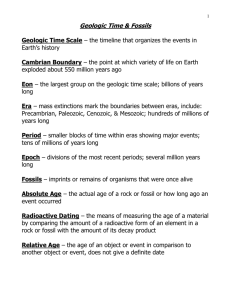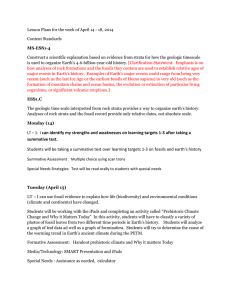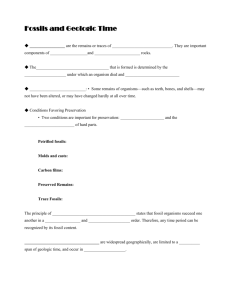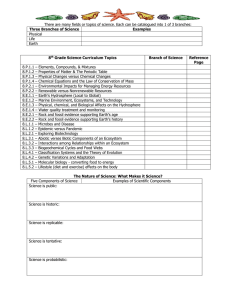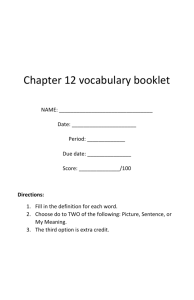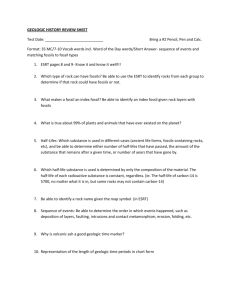Chapter 3, 4, 5, & 6 Study Guide
advertisement
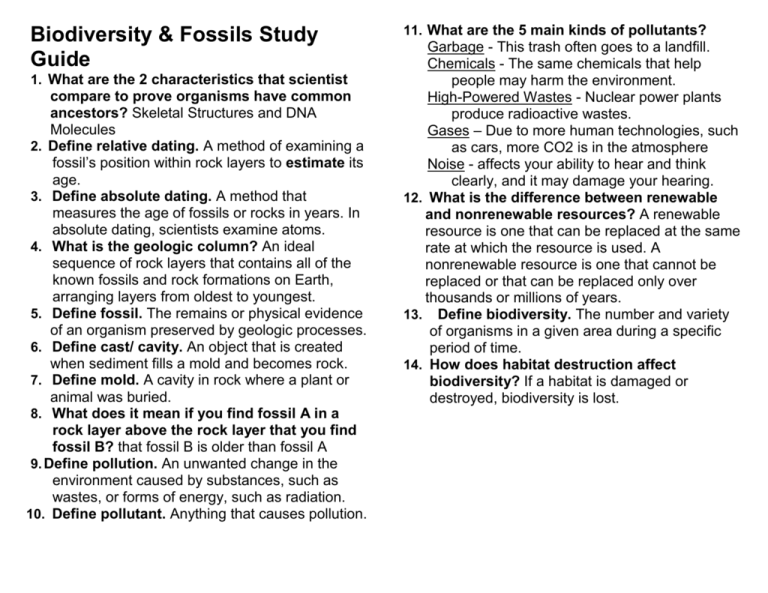
Biodiversity & Fossils Study Guide 1. What are the 2 characteristics that scientist compare to prove organisms have common ancestors? Skeletal Structures and DNA Molecules 2. Define relative dating. A method of examining a fossil’s position within rock layers to estimate its age. 3. Define absolute dating. A method that measures the age of fossils or rocks in years. In absolute dating, scientists examine atoms. 4. What is the geologic column? An ideal sequence of rock layers that contains all of the known fossils and rock formations on Earth, arranging layers from oldest to youngest. 5. Define fossil. The remains or physical evidence of an organism preserved by geologic processes. 6. Define cast/ cavity. An object that is created when sediment fills a mold and becomes rock. 7. Define mold. A cavity in rock where a plant or animal was buried. 8. What does it mean if you find fossil A in a rock layer above the rock layer that you find fossil B? that fossil B is older than fossil A 9. Define pollution. An unwanted change in the environment caused by substances, such as wastes, or forms of energy, such as radiation. 10. Define pollutant. Anything that causes pollution. 11. What are the 5 main kinds of pollutants? Garbage - This trash often goes to a landfill. Chemicals - The same chemicals that help people may harm the environment. High-Powered Wastes - Nuclear power plants produce radioactive wastes. Gases – Due to more human technologies, such as cars, more CO2 is in the atmosphere Noise - affects your ability to hear and think clearly, and it may damage your hearing. 12. What is the difference between renewable and nonrenewable resources? A renewable resource is one that can be replaced at the same rate at which the resource is used. A nonrenewable resource is one that cannot be replaced or that can be replaced only over thousands or millions of years. 13. Define biodiversity. The number and variety of organisms in a given area during a specific period of time. 14. How does habitat destruction affect biodiversity? If a habitat is damaged or destroyed, biodiversity is lost.

